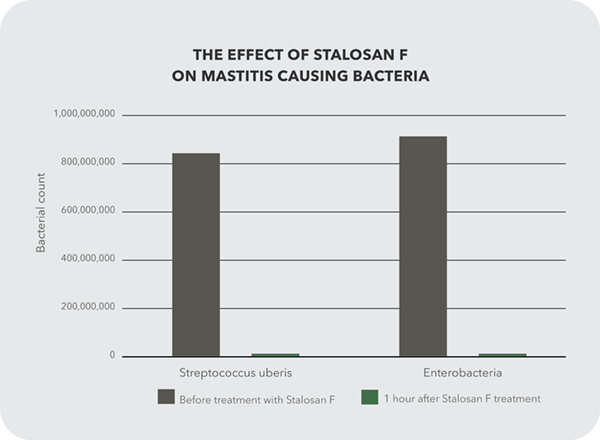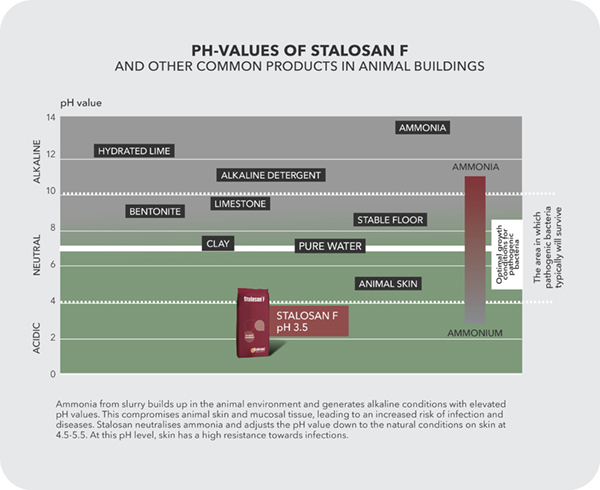Stalosan
- Powerful biocide: Effectively reduces the pathogen load in cow cubicles.
- Maintains low Somatic Cell Count (SCC): Helps keep SCC levels low, which improves milk quality.
- Reduces risk of mastitis: Lowers the likelihood of mastitis, enhancing udder health and overall productivity.
Stalosan F operates by eliminating pathogens in cow cubicles, leading to improved udder health and potentially reducing the replacement rate. It is effective against a broad spectrum of
microorganisms, including bacteria, viruses, fungi, and parasites. This is particularly beneficial for controlling mastitis and managing elevated SCC. Mastitis is caused by pathogenic bacteria entering the teat canal, resulting in damage to milk-producing tissue and decreased milk yields. Cows with chronic mastitis are often culled due to the risk of bacterial transmission to other cows.


Combining HooFoss and Stalosan F
Studies show that lameness is associated with higher SCC and increased mastitis (Singh et al., 2018). Peeler et al. (1994) found that lame cows have 1.4 times higher clinical mastitis and SCC compared to non-lame cows. HooFoss can support Stalosan F in reducing SCC and mastitis, while Stalosan F helps maintain a low pH in cubicles, enhancing HooFoss’s effectiveness.
Elevated SCC indicates mastitis and other udder infections, impacting cow health and milk production. A German dairy farm reduced SCC from over 350,000 SCC to under180,000 SCC by using both HooFoss and Stalosan F.
Dosage and use:
Apply 50 g of Stalosan F to the rear section of cubicles 1-2 times per week. In cases of elevated somatic cell count (SCC) or mastitis caused by environmental bacteria, increase the application to daily use. Once the issue is under control, revert to the standard application of 1-2 times per week. Ensure even distribution of Stalosan F, as uneven application may reduce its effectiveness.
For cows on deep litter, apply Stalosan F on top of the bedding at a rate of approximately 100 g/m², following the same frequency as recommended above.

